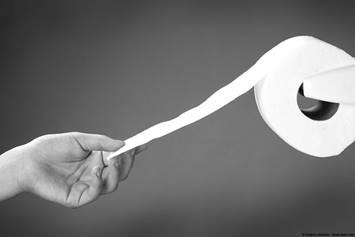Vesicoureteral Reflux (VUR)
Vesicoureteral reflux (VUR) happens when pee flows backward from the bladder to the kidneys. This can cause kidney infections and damage.
What Is Vesicoureteral Reflux (VUR)?
Normally, urine flows only down from the kidneys to the bladder. Vesicoureteral reflux (VUR) is the abnormal backward flow of urine from the bladder to the kidneys. This backwards flow increases the child’s risk of urinary tract and kidney infections. Some children can outgrow VUR, and may not have any long term health consequences.
However, in some children with VUR, repeat infections can cause kidney scarring. This permanent damage may lead to high blood pressure and, in rare cases, kidney failure that requires a kidney transplant. VUR can also cause a build-up of urine inside the kidneys, which also produces scarring.
Medications and surgery are both used to reduce the reflux and potential for infections, and prevent kidney damage.
What Are the Symptoms of Vesicoureteral Reflux?
Although VUR does not cause urinary tract infections (UTIs), those who have VUR are at greater risk of getting UTIs and a higher incidence of bladder or voiding dysfunction. The backwards flow of urine exposes the kidneys and ureters to bacteria that may already be in the bladder.
Signs that Your Child May Have a UTI
When infants and children get multiple, back to back UTIs, physicians may recommend they be tested for VUR. Newborns with VUR may not have any symptoms, but the condition can usually be found before birth during routine prenatal ultrasounds. This is known as prenatal or antenatal hydronephrosis. Because VUR can resolve on its own, newborns will not receive treatment, but physicians will track the infant’s kidney health and development closely over several months.
What Causes Vesicoureteral Reflux?
There is a one-way valve in between the bladder and the ureters (the tubes that lead from the kidneys to the bladder) that is supposed to prevent urine from going backwards. When that valve doesn’t work well, urine refluxes from the bladder up into the kidneys. Infant girls are at the highest risk for developing VUR, and VUR appears to run in families. Siblings of children who have VUR are more likely to develop the condition, and many urologists will recommend screenings for siblings, even if they do not have any symptoms.
How Is Vesicoureteral Reflux Diagnosed?
A Voiding Cystourethrogram (VCUG) is the only test that can diagnose vesicoureteral reflux. For this test, the bladder is slowly filled with a special dye, and when the bladder is full, the child is asked to urinate. A special imaging machine tracks how the dye travels through the bladder to determine if reflux is occurring while the bladder is filling, emptying or both. A VCUG can be uncomfortable so your child may be sedated for the test.
The imaging test helps physicians grade the severity of VUR, which is done on a scale from 1 (mildest) to 5 (most severe). Mild cases of VUR may not cause any or only minimal kidney damage.
If your child has already been diagnosed with a UTI, or treated for multiple UTIs, the doctor may also recommend a kidney and bladder ultrasound. It’s a non-invasive and fast way to determine the health of the kidneys, and can help the doctor develop a treatment plan.
How Is Vesicoureteral Reflux Treated?
Treatment for VUR is based on the severity of the condition and if there is a history of repeat UTIs. Infants who are diagnosed with VUR during a prenatal screening, but show no signs of complications or infections after birth, may not need therapy. However, in more severe cases or in children who are at high risk of UTI or have had multiple UTIs, medical or surgical treatment is recommended to help prevent kidney damage.
- Antibiotics. First-line therapy for mild to moderate VUR is antibiotics. If your child already has a UTI, the doctor will first treat the UTI with antibiotics, and then prescribe an ongoing dose of antibiotics to prevent any future UTIs. If your child continues to get UTIs while on antibiotics, the doctor may recommend surgical treatment.
- Surgery. The goal of surgery is to repair the valve between to bladder and ureter and prevent the backflow of urine. There are several different types of surgery that can be used to fix the valve, including minimally-invasive surgery. The surgeon will evaluate your child’s anatomy and the results of the dye test to select the method that is most likely to succeed. While surgery is effective at repairing the valve more than 90% of the time, it is recommended only for children who have very severe reflux, worsening of kidney damage or who can’t/won’t take antibiotics. Because of potential complications during pregnancy, surgery is also recommended for girls with VUR as they get closer to puberty.



